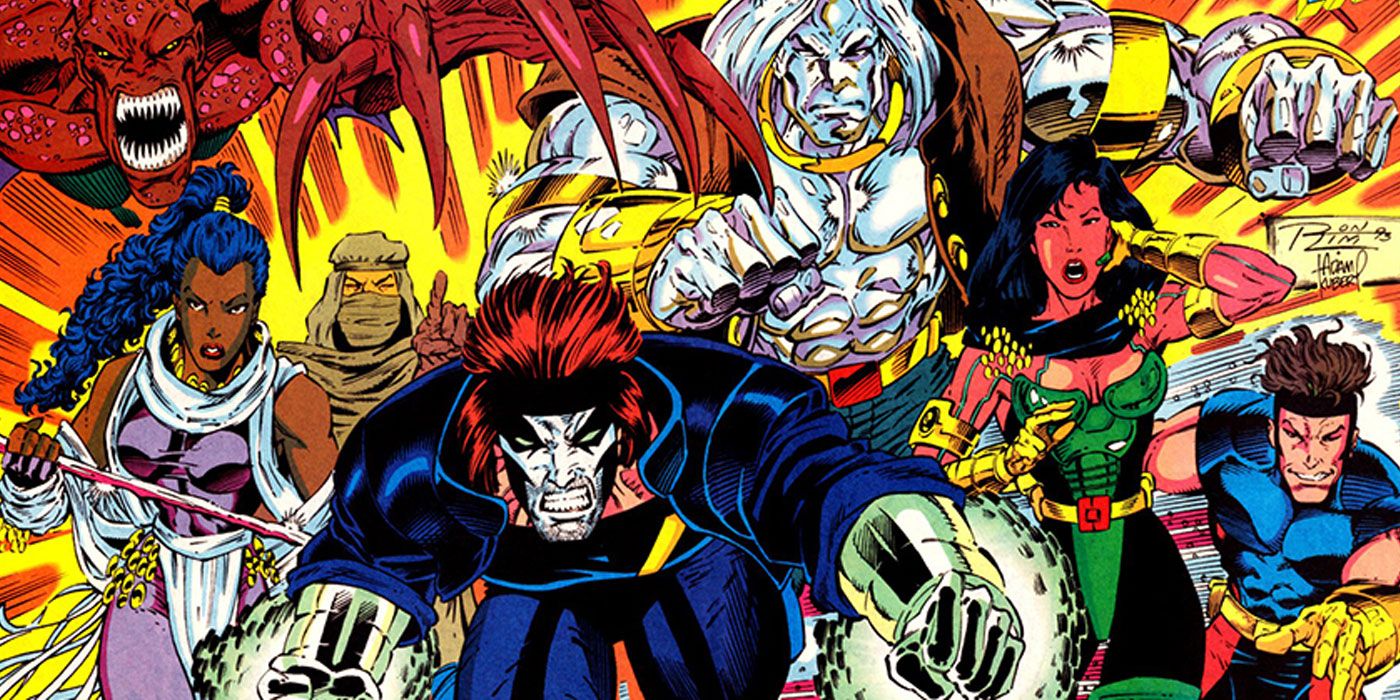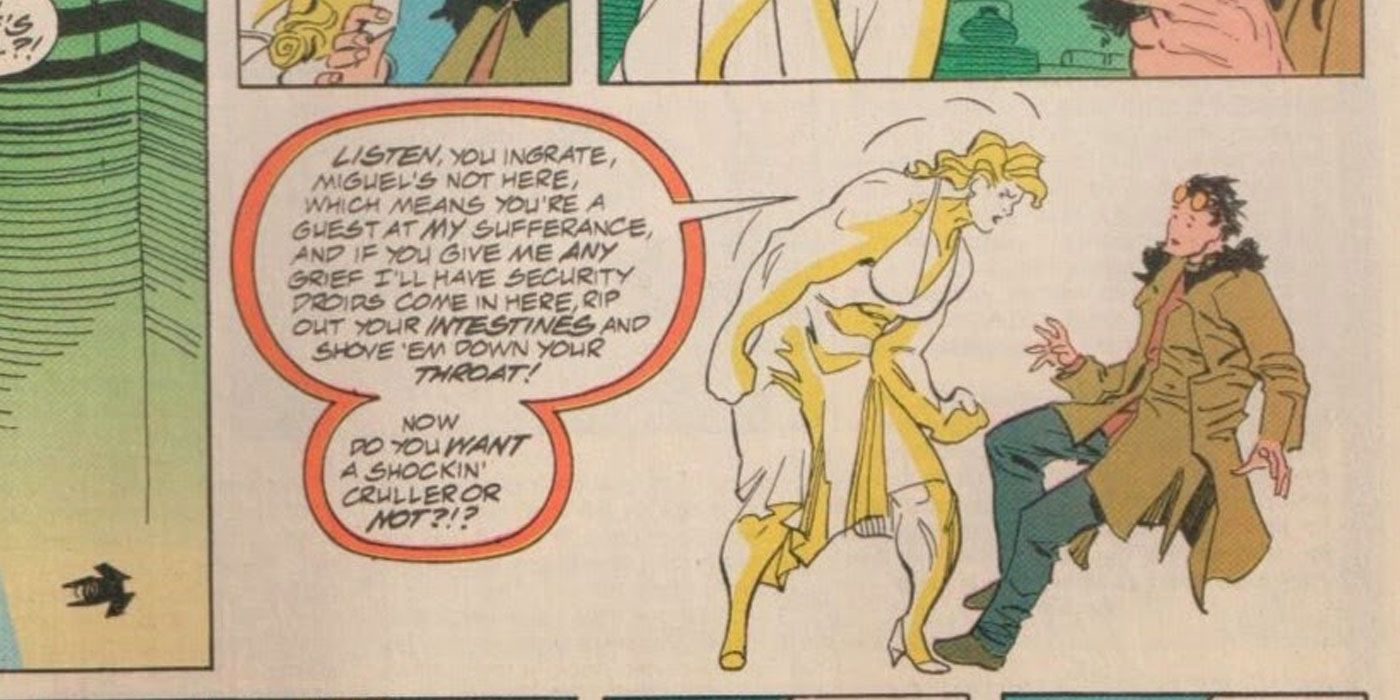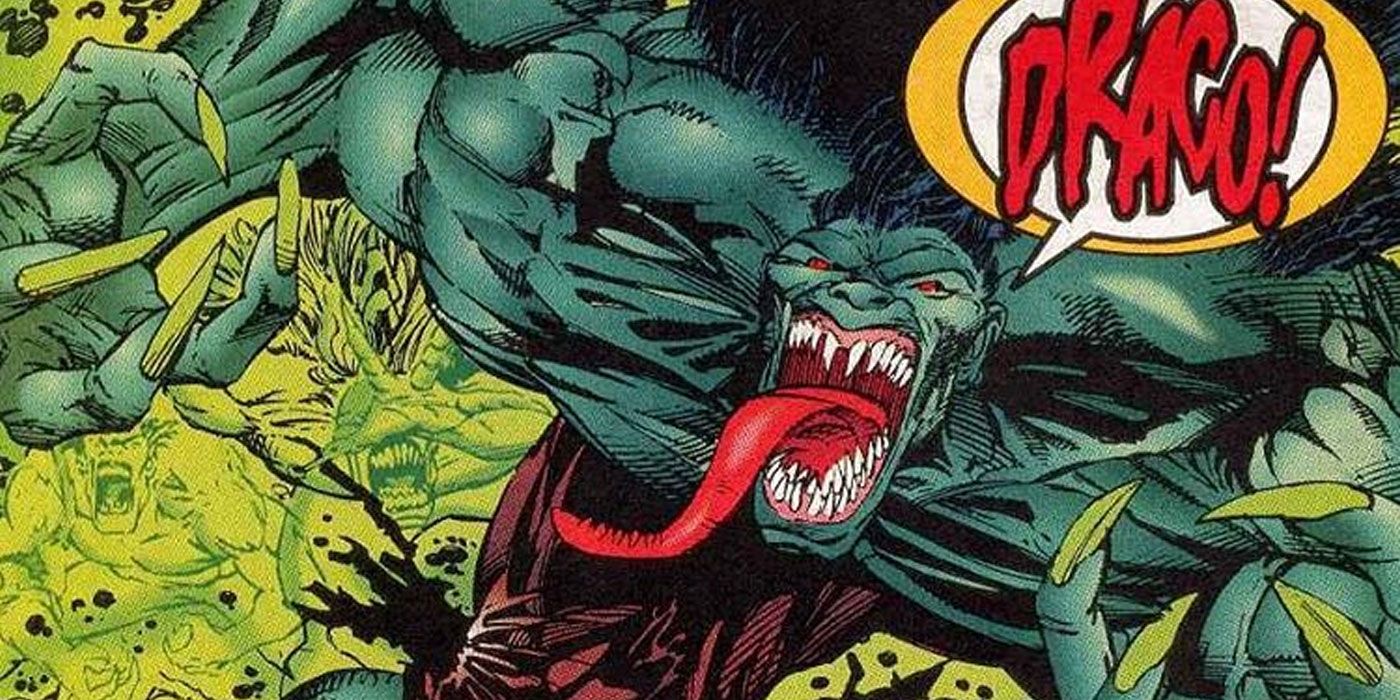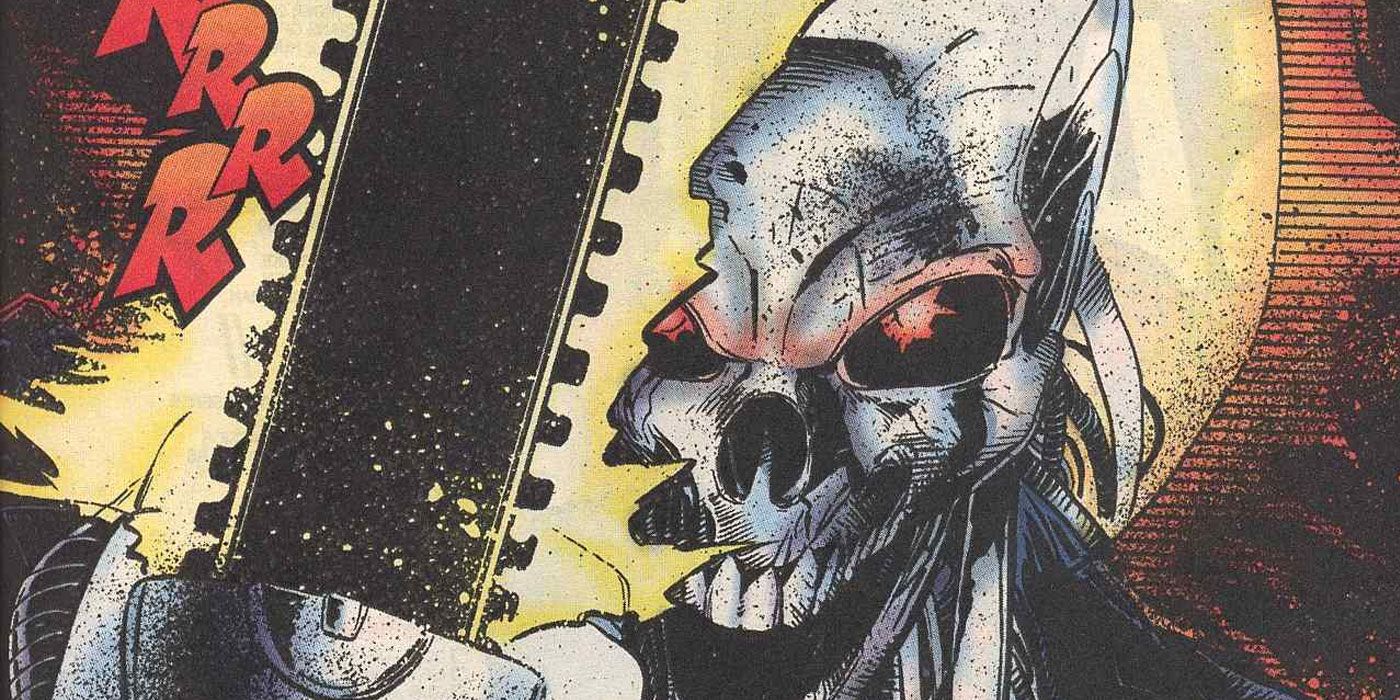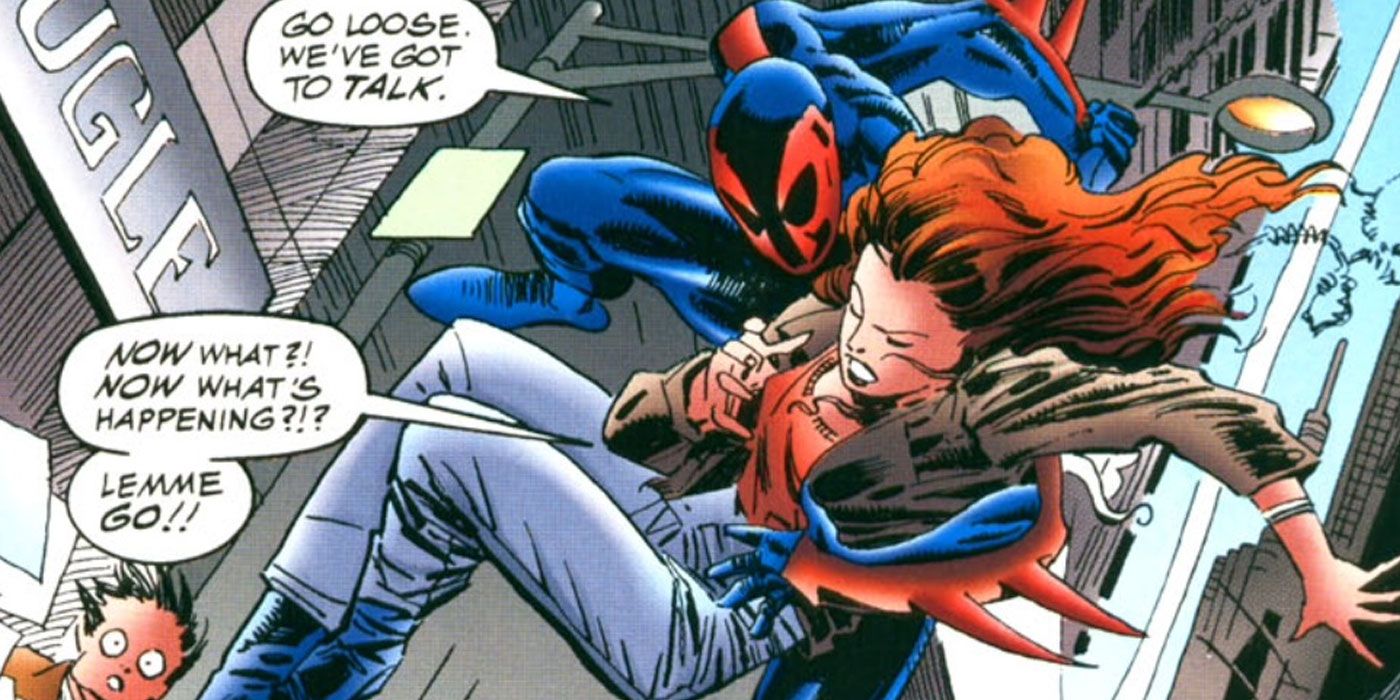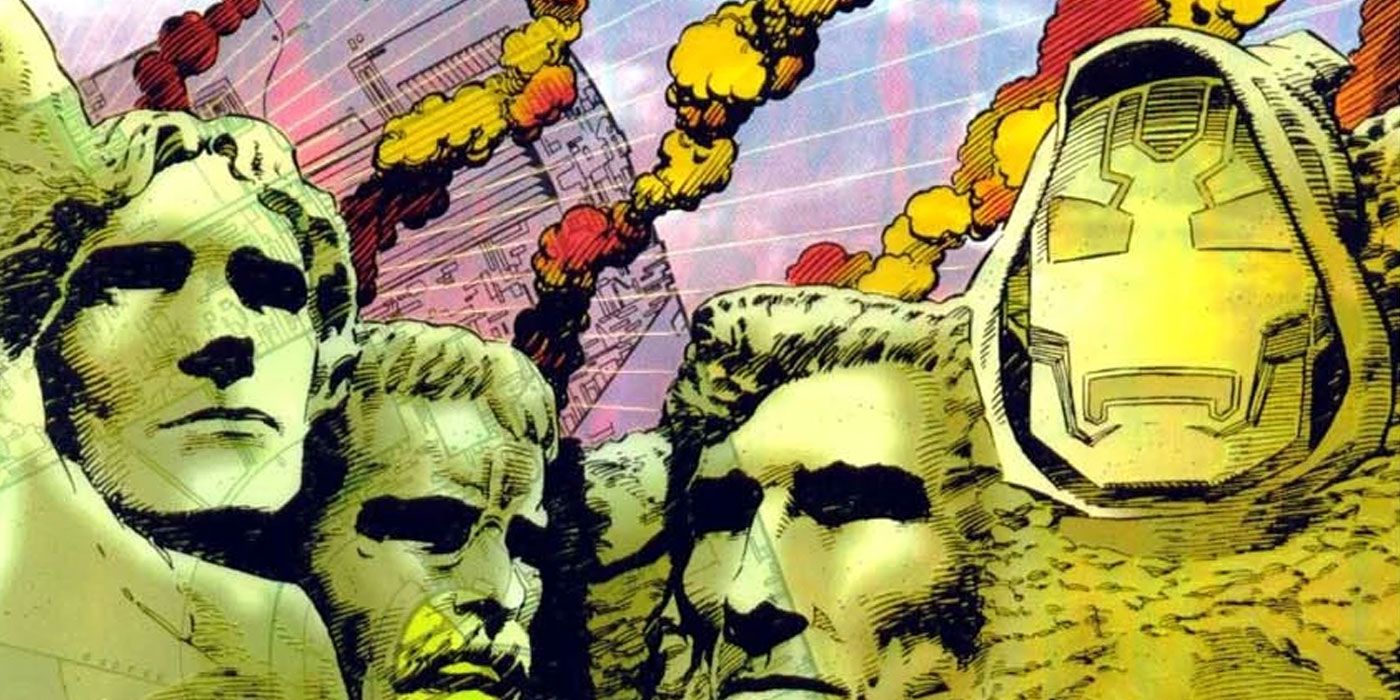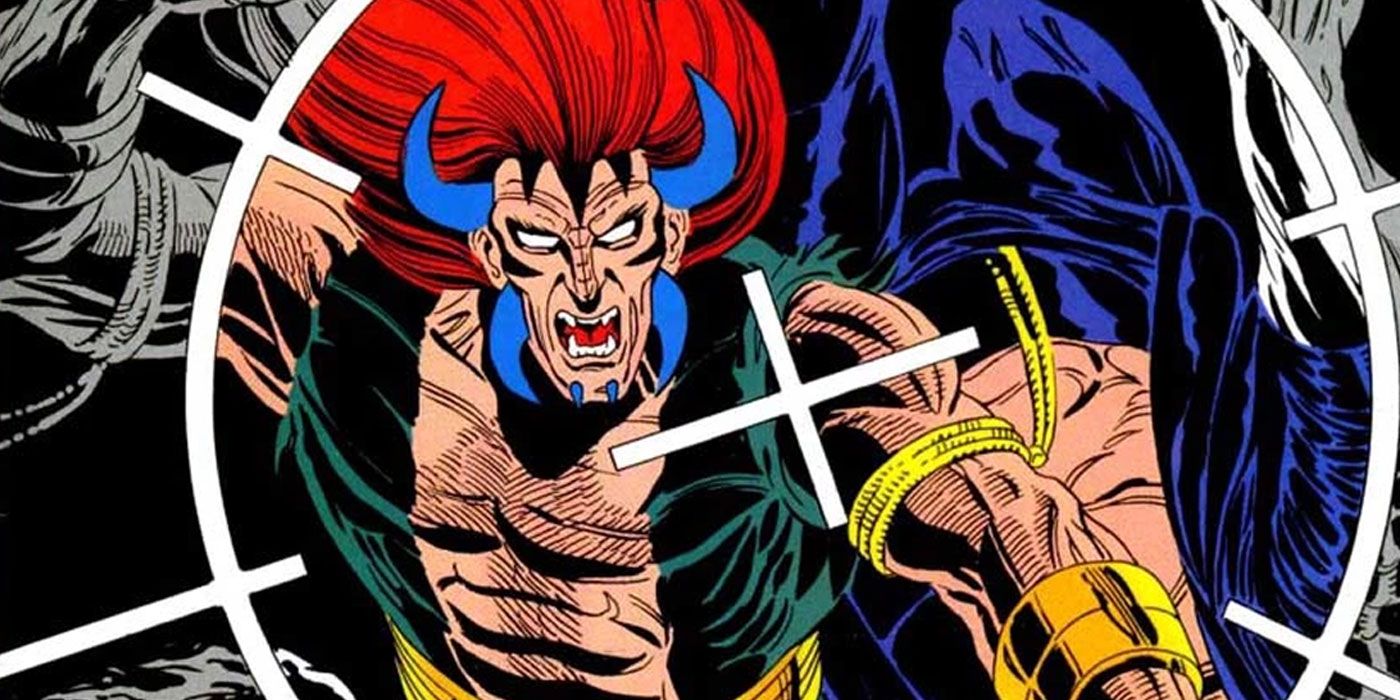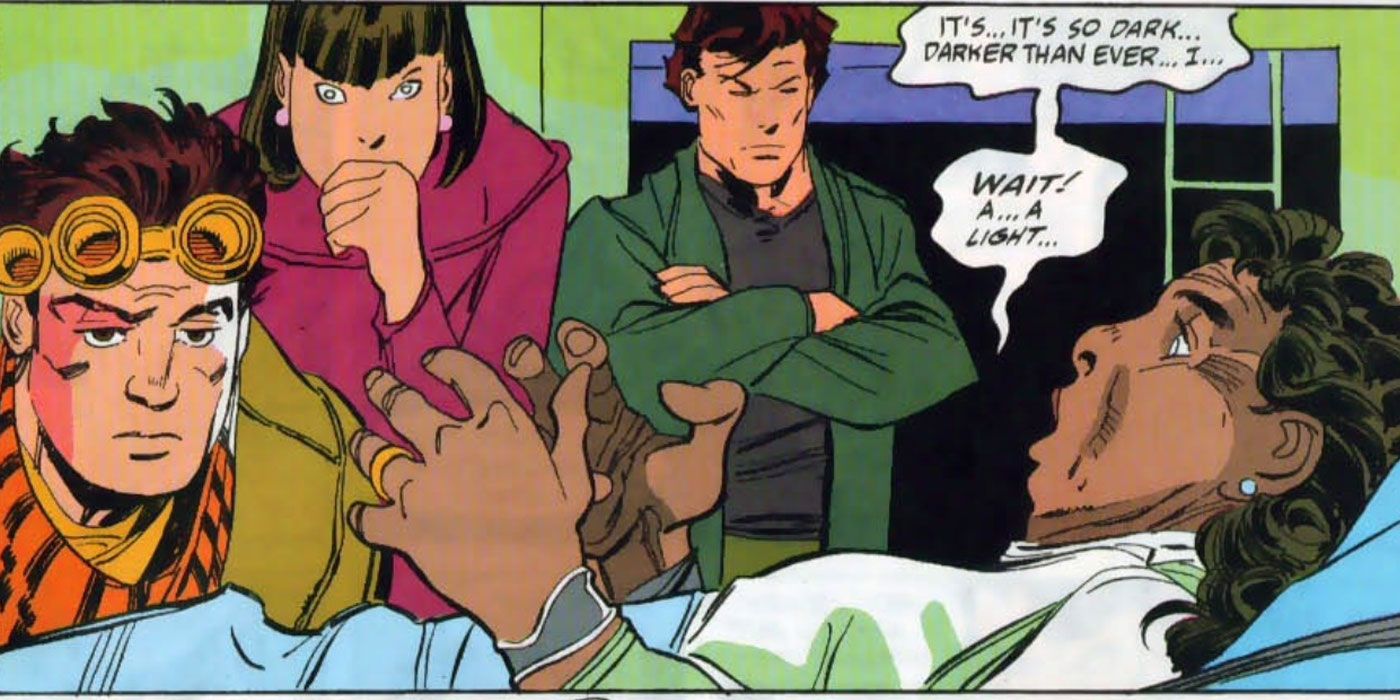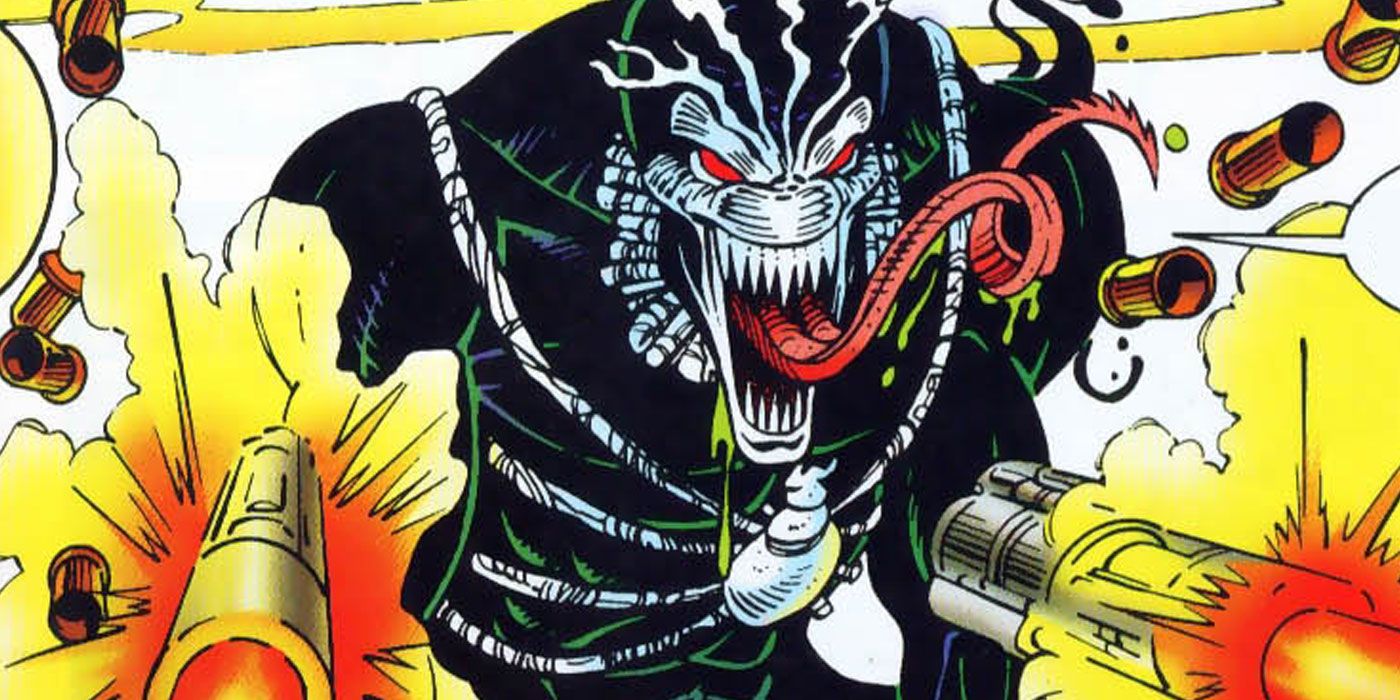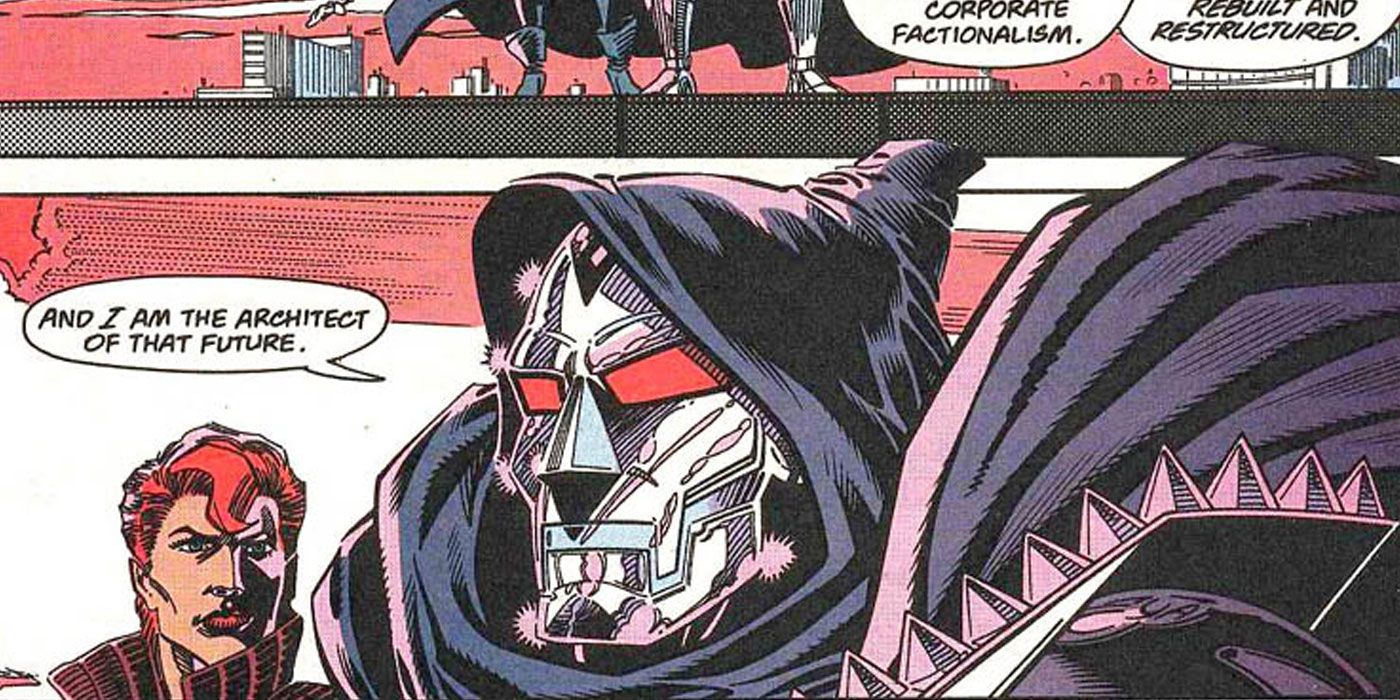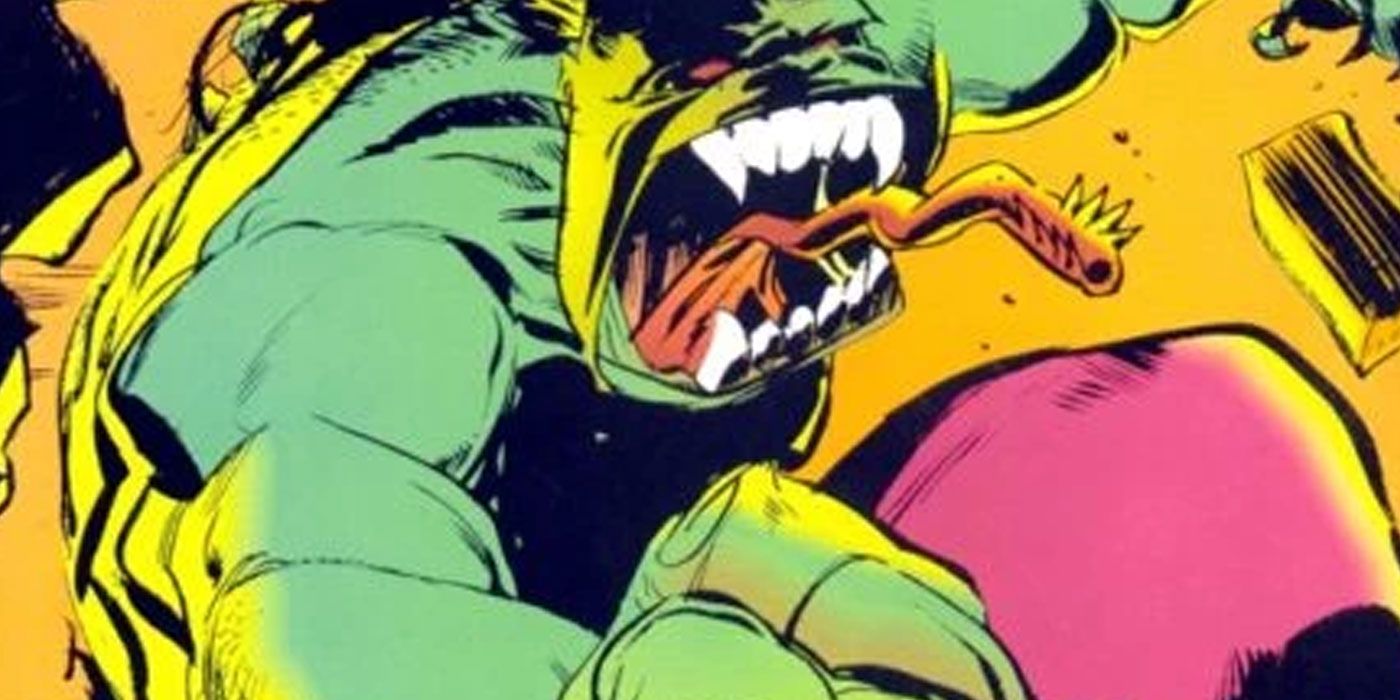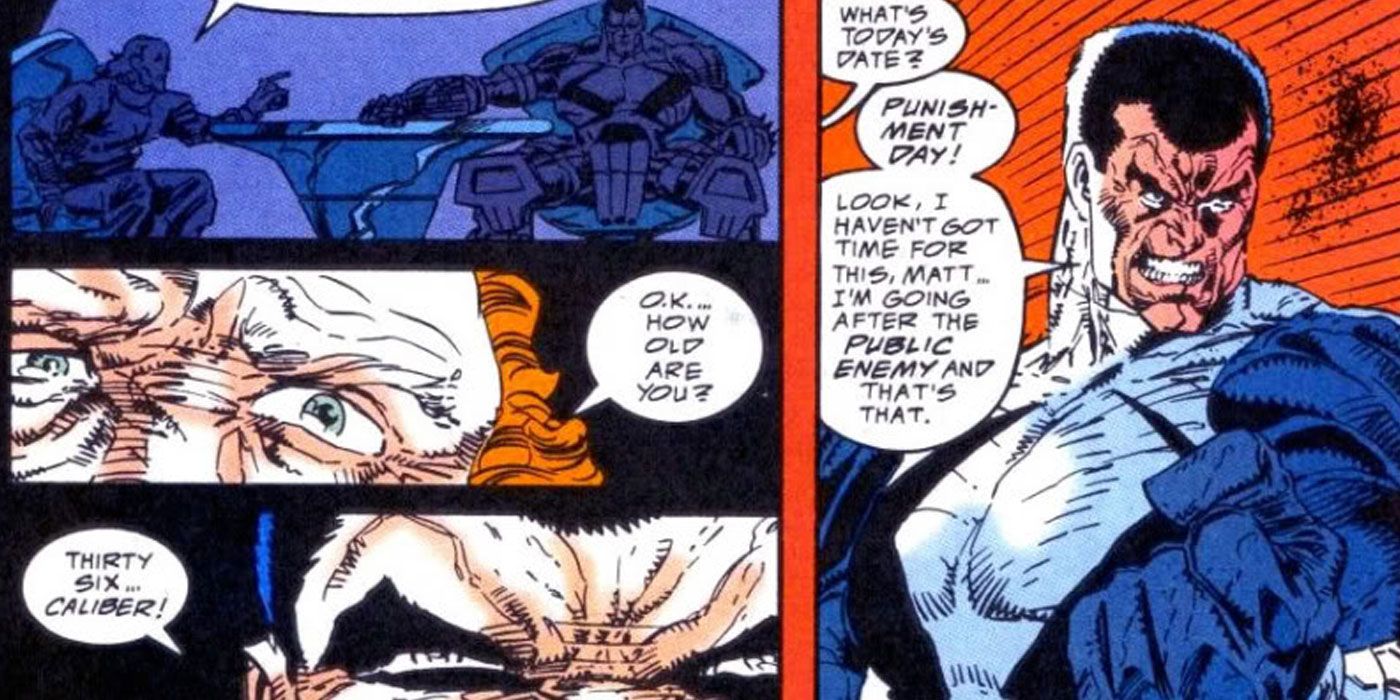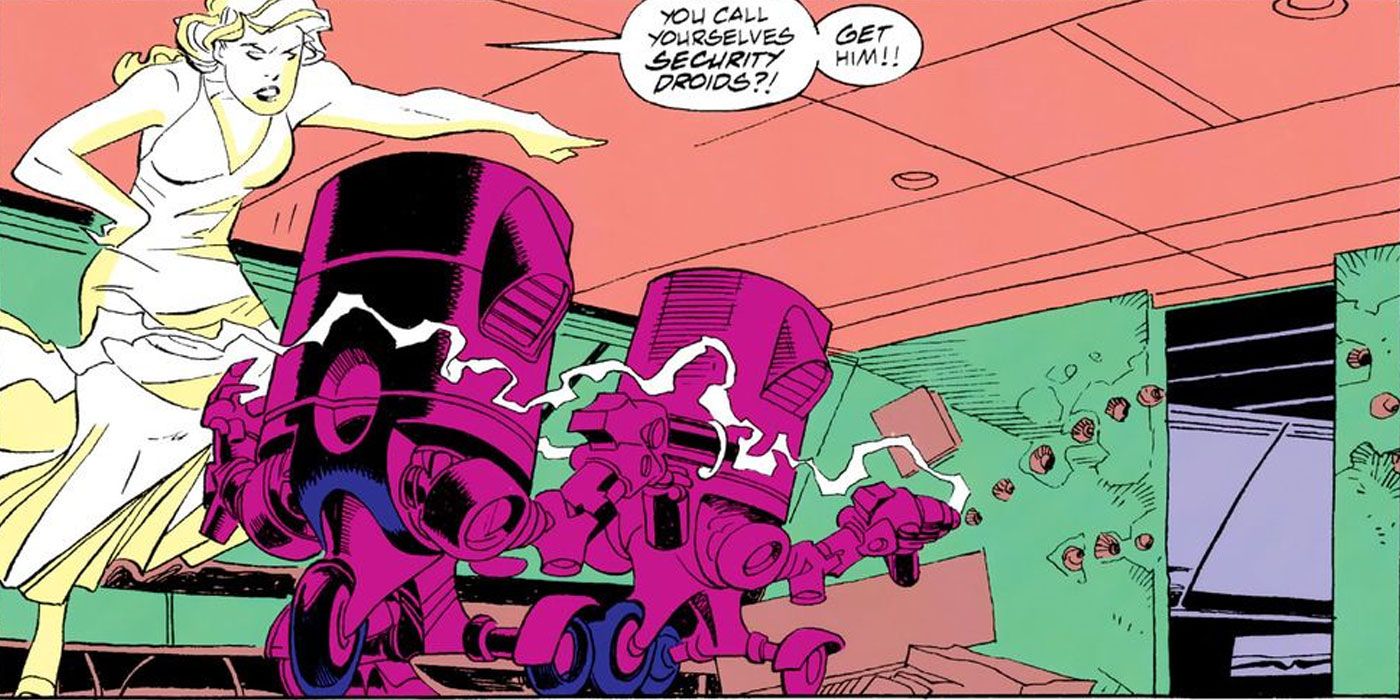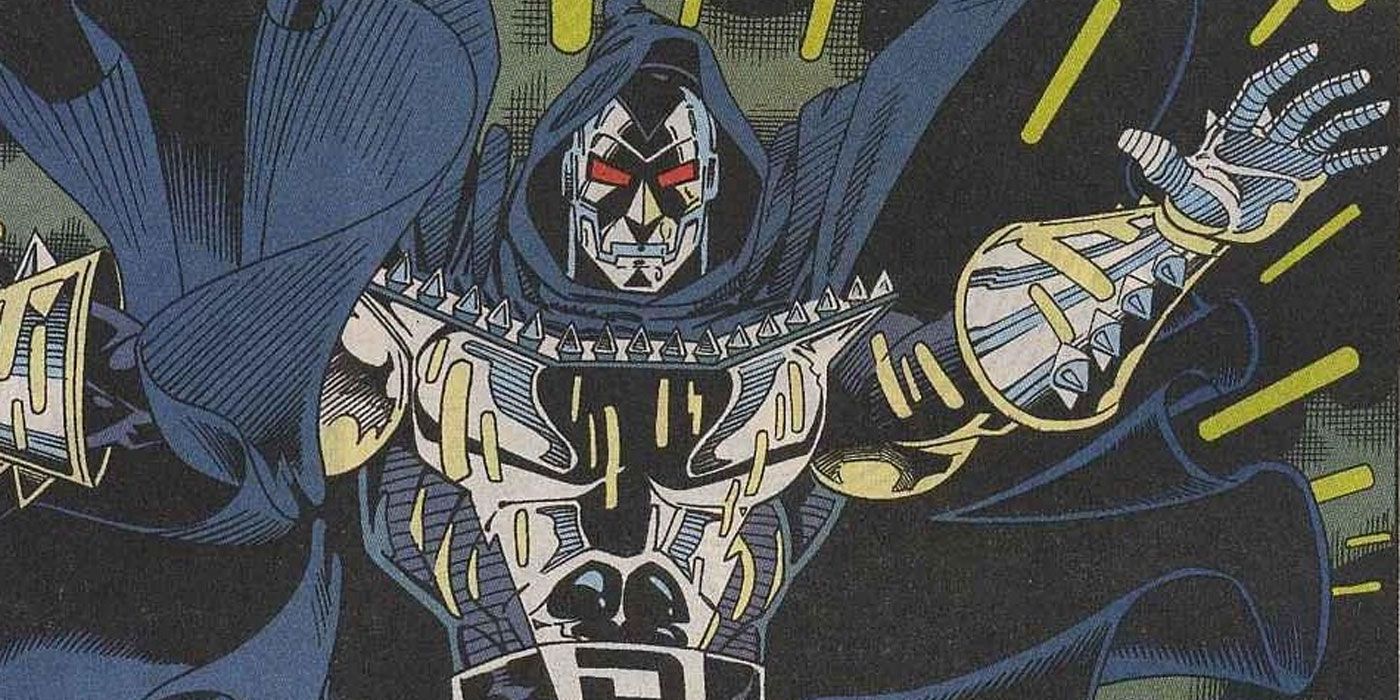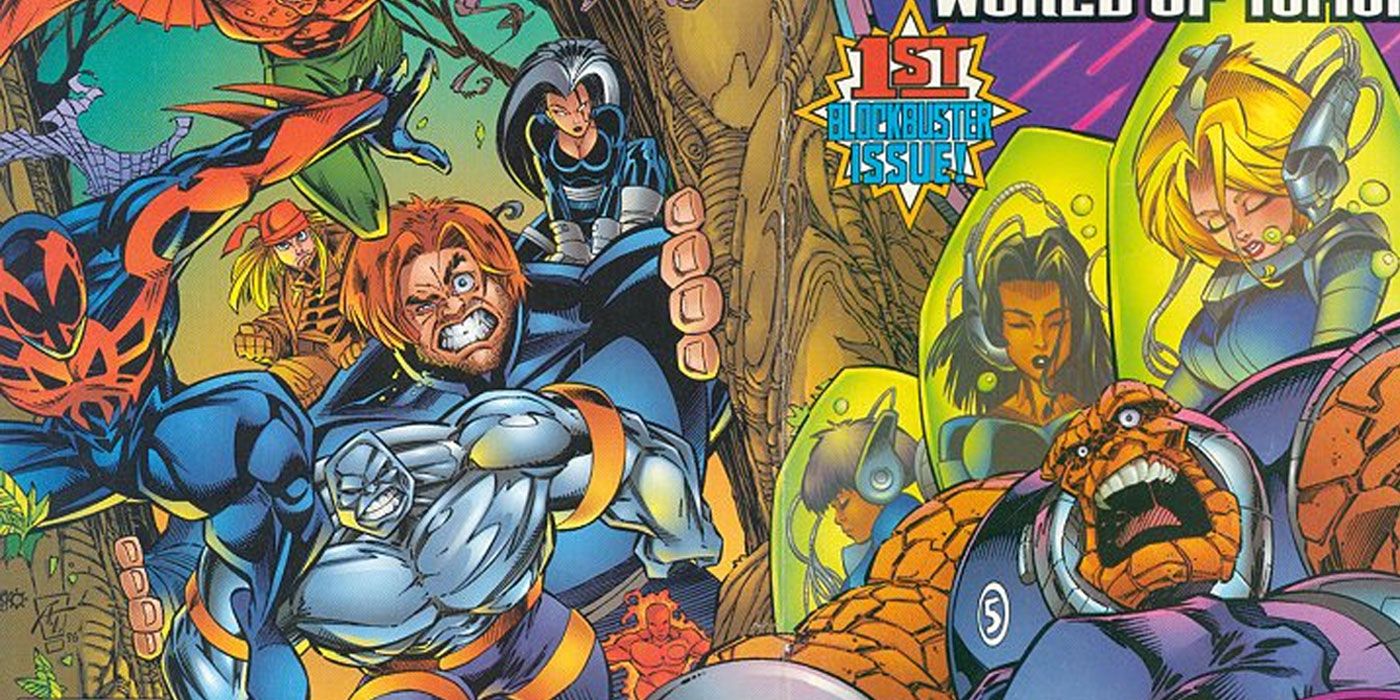Right now, the future of Marvel is certain: more movies, more comics! In the mid-’90s it was less so, what with the collapse of the speculator market and declaration of bankruptcy. In the middle of all that, though, the House of Ideas took the unprecedented step of launching an imprint all about predicting a far-flung future for their roster of superheroes. We’d had a few glimpses at what lay ahead for the Marvel Universe -- mainly in X-Men comics, and mainly depressingly dystopian -- but this one was more fully realized.
RELATED: Doomsday Clock: The 15 Scariest Dystopian Futures In Comics
An interconnected line of ongoing series, “Marvel 2099” envisioned a future America suffused by technology and corporate control, populated by new versions of some of the publisher's biggest characters. Declining sales resulted in cancellation in 1998, six years after its launch, but its influence is still felt. From novel takes on old favorites to surprise star creators, here are the 15 best things about Marvel 2099.
15 FUTURE SPEAK
Naturally, to go along with the cyberpunk trappings, the 2099 books had its own lexicon full of futuristic slang. You can’t have a future sci-fi setting without having your characters speaking some made-up nonsense dialect the creators cooked up. It never tipped over into semi-impenetrable “Clockwork Orange” patois, but the 2099 line did end up with a fully-developed dictionary of future speak used across the various series.
A favourite was the all-purpose exclamation “shock,” which was used to cover any number of expletives the Comics Code forbade. There were also more specific (and self-explanatory) curse word-alternatives to the usual black bars or symbols censoring the bad language, including “son of a glitch” -- favored by “Ghost Rider 2099” -- and “jammit!” There was also “bithead” as an original futuristic insult. Inventive and delightfully silly bits of linguistic fun.
14 HULK 2099
The delights of the 2009 line’s main triumphs -- “Spider-Man,” “X-Men” -- are well known. Less celebrated are the weirder books, the second wave that came after the relative success of the imprint’s line-up at launch. One of the more oddball entries was “Hulk 2099,” which took the concept of the modern day Bruce Banner (guy becomes angry monster after exposure to gamma rays) and makes it a whole lot freakier, while maintaining direct links to its predecessor.
John Eisenhart was a Hollywood producer trying to buy the story rights of the Knights of Banner, a cult experimenting with gamma radiation to try and create a new Hulk. Eisenhart becomes the monster in an accident but keeps his new identity under wraps, ending up in a situation of investigating himself for a possible “Hulk” blockbuster, whilst the studio he works for falls apart. The monstrous twist? The new green giant had long claws, sharp teeth and a terrifyingly long prehensile tongue, but the Hulk was actually the more mild-mannered of this split personality. Eisenhart was the ruthless, unthinking one.
13 GHOST RIDER 2099
Ghost Rider occupies an unusual place in the Marvel Universe. Like Doctor Strange and Thor, his origin is poised in direct opposition to the majority of the world’s superheroes, whose powers have scientific origins. The character is also one of the few whose mantle is passed on with a degree of permanence; Johnny Blaze returns every once in a while, but the “curse” of the Ghost Rider has a built-in shareability.
So it makes sense that, by 2099, there’s a whole new vessel for the spirit of vengeance. However, this future setting is perhaps even more tech-based than the contemporary 616 continuity. That means that instead of being in any way demonic in origin, “Ghost Rider 2099” has a completely original, brilliant premise: after being killed for stealing sensitive information, hacker Kenshiro "Zero" Cochrane was brought back to life not through a deal with Mephisto, but by having his consciousness downloaded into a robot body. Ingenious!
12 IT STAYED IN ITS LANE
Depending on your point of view, events are either the scourge or one of the great joys of mainstream superhero comics. Regardless of your opinion, there’s no denying that crossovers serve to derail ongoing series for at least a couple of issues, insisting that any ongoing storylines be put on hold so the heroes can team up for whatever meta-narrative reasoning the editorial team have cooked up this time to provide some widescreen blockbuster action.
The 2099 line, to its credit, avoided this trap by being set a century or so after the rest of the series Marvel was publishing. In fact, there were only a couple of very mild crossovers with the present-day series, with a one-shot meeting for the contemporary and futuristic Spider-Man and Doom 2099 popping back to to 1996. The notable exception was a “Fantastic Four” series, which saw the original FF propelled into the future, but for the most part, 2099 remained its own hermetically-sealed world.
11 CROSSOVERS WITH LASTING CHANGE
That is not to say the 2099 imprint was completely devoid of crossovers. When it did them, however, it was usually with good reason (even if that reason was falling sales and a need to cancel a bunch of books), and with consequence. The first of these was “The Fall of the Hammer,” which involved the corporations in charge of this semi-dystopic future trying to engineer an impostor Valhalla populated with recreations of the Norse pantheon, to stand in opposition to the anti-capitalist heroes who had started cropping up, as well as a Thor-worshipping cult.
The other major 2099 event came thanks to editorial fiat. Various writers, including Grant Morrison and Mark Millar, were invited to pitch ideas of a catastrophic crossover that would see half the line -- including “Ravage” along with the 2099 versions of “Hulk” and “Punisher” -- killed off and subsequently canceled. The winning idea ended up being that Doctor Doom takes over the United States, before being ousted by an evil Steve Rogers impostor as president, who ordered the violent execution of a swathe of heroes. It was bloody, but brilliant!
10 STAN LEE RETURNS
Stan “The Man” Lee remains synonymous with the publisher where he made his name, all these decades later. However, he’s not really worked for Marvel for years, and he stopped writing full-time during the '70s. Since then, he’s been more of a figurehead, going off to do his own thing and occasionally popping back for publicity purposes or movie cameos. He even did some work for DC! In the '90s, though, he came back in a more tangible capacity, writing the first eight issues of “Ravage 2099.”
Unlike the rest of the 2099 line, Ravage was an original character, not an update of an existing Marvel hero. A former CEO framed for espionage and forced to go on the run, the vigilante character was used as a mouthpiece for Lee to address the same sort of cultural and societal grist he used for his mill back in the day. “Ravage 2099” was a very eco-conscious, politically-charged book that was reminiscent of Lee’s best work, even if the concept and artwork was a little too '90s-“edgy.”
9 THE SUPPORTING CAST
Besides a roster of iconic heroes, what traditionally sets Marvel Comics apart from the competition is it stellar supporting casts. The soap operatics of classic Marvel don’t work without an ensemble to propel sub-plots and secret identity-related conflicts. This part of the original Marvel formula was kept in place for the 2099 line, something which editor Joey Cavalieri wanted to ensure, along with some ‘60s-style interconnectivity between titles.
“Doom 2099” had a whole cabal of advisers and servants both aiding and undermining his plotting. Miguel O’Hara struggled to keep his ne’er-do-well brother Gabriel on the straight and narrow, and found himself caught in a love triangle between his childhood sweetheart and the artificial intelligence which ran his apartment. “Ghost Rider 2099” had his own gang of A.I. friends in V.R. And “Hulk 2099” was curiously media-focused, with a supporting cast of film studio executives and musicians crossing paths with the futuristic green giant.
8 GREAT NEW VILLAINS
What’s a roster of great heroes without an equally stacked deck of villains for them to face off against? As with the good guys, “Marvel 2099” featured a bunch of updated, tricked-out future versions of classic baddies. There was a radical activist Goblin obsessed with proving that the Spider-Man of 2099 was actually in the pocket of the megacorps he claimed to fight against; a grotesque Jigsaw 2099 cobbled together out of animal, human and cybernetic limbs; and a future version of Venom more akin to the xenomorphs from “Alien.”
The 2099 rogues gallery wasn’t wholly dependent on what had come before it, however. There were plenty of original, memorable antagonists for the futuristic heroes. Top of the pile were nanotech-enhanced CEO Fearmaster, martial arts expert The Specialist, and the wonderfully-monikered Brimstone Love and his Theater of Pain -- an X-Men antagonist who endeavored to make pain and suffering a literal art form.
7 WARREN ELLIS DEBUT
The oft-referenced “British Invasion” of American comic books (as compared to the huge import of rock bands like The Beatles and The Rolling Stones in the ‘60s) is mostly attributed to DC and Vertigo, who pilfered writers and artists from “2000 A.D.” including the likes of Neil Gaiman, Steve Dillon, Dave Gibbons and Alan Moore. What’s talked about less is the part Marvel had to play in this sea change, including giving a young man called Warren Ellis some of his earliest American work.
Ellis’ first work for Marvel was on the mostly-forgotten and short-lived “Hellstorm: Prince of Lies” series, before moving onto the 2099 imprint. He was the person responsible for the rising popularity of "Doom 2099," and masterminded the “After Doom” storyline, which saw the villain taking over the United States. Even looking back now, the themes and topics which would become Ellis’ bread-and-butter -- winking cynicism, witty dialogue, radical politics and transhumanist technology -- are evident in this formative scripting work.
6 A PROVING GROUND FOR NEW TALENT
Ellis wasn’t the only one who benefited from the work offered by the 2099 line. Marvel appeared to use the books as something of a crucible for new talent. While initially developed by old hands Stan Lee and John Byrne, and with early series being steered by veterans of the industry including Peter David, as well as British “2000 A.D.” progenitor Pat Mills. Kyle Baker even did some covers for “2099 Unlimited!”
Having some experienced hands at the writing table allowed for more innovation on the art side of things. “Ghost Rider 2099” had a revolving-door creative team that gave the opportunity for Chris Bachalo, Ashley Wood and “Fables” artist Mark Buckingham to cut their teeth, while Humberto Ramos made a name for himself (after some work for Milestone Media and DC) on the mutant spin-off series “X-Nation 2099.” On the scripting side of things, “Fantastic Four 2099” was Joe Kelly’s first work after being recruited out of college.
5 PUNISHER 2099
Frank Castle has been a lot of things during his career as the Punisher, but he’s never been much of shrinking violet. Compared to “Punisher 2099,” however, he’s basically a pussycat. Jake Gallows is closer to the authoritarian, borderline fascistic “Judge Dredd,” which makes sense; the majority of “Punisher 2099” was written by “2000 A.D.” veterans Pat Mills and Tony Skinner, with art by Tom Morgan. This Punisher’s vigilantism was somewhat less justified, but a lot of fun.
A member of private police (and the “Church of Thor”) whose family are killed on orders of industrialist Kron Stone, Jake’s vengeful killing spree was inspired by his discovery of Frank Castle’s war journal -- but he went further than Frank ever did. He killed a lot of people (sometimes by kicking them with turbo-powered boots), but also built a prison beneath his house to keep criminals; fought gorillas, killer sex robots and organ thieves; teamed up with a talking motorcycle; and ended up joining Doom 2099. It was over-the-top and genius in its ludicrous semi-satire.
4 ALL CYBERPUNK EVERYTHING
The House of Ideas has never been one to let a trend pass without trying to capitalize on it. During the early '90s, the zeitgeist was buzzing with the nascent promise of the information superhighway, growing economic power from tech-centered industries in Japan and beyond, and the hangover of President Ronald Reagan’s social policies. All of these coalesced into cyberpunk, a science fiction subgenre with a focus on dystopian futures populated by hero hackers raging against corrupt corporations.
While Marvel 2099 never quite reached the levels of nuance or perception as William Gibson or Bruce Sterling, the influence of cyberpunk on the line is undeniable. The future United States is explicitly run by private concerns, like Alchemax, and story arcs took place in virtual reality landscapes, entirely automated cities and involved no shortage of computer hacking. There were never any skies the color of a TV tuned to a dead channel, although George Roussos did some great coloring work on “Spider-Man 2099.”
3 DIVERSITY, DIVERSITY, DIVERSITY
Marvel, and the comics industry in general, has been making some credible leaps in on-page diversity in recent years. There’s still a ways to go with regards to the talent producing the books, but shelves full of heroes like Kamala Khan and Miles Morales are nothing to sniff at. It should be noted that the publisher predicted a more diverse future with the 2099 line, which had a commitment to featuring non-white/straight/male characters with a disarming off-handedness that applied to even its premiere characters.
The Ghost Rider of 2099 was a Japanese kid called Kenshiro, perhaps after the ripped star of “Fist of the North Star.” Miguel O’Hara, the future Spider-Man, is of mixed Mexican heritage, a good couple of decades before half-Latino Miles pulled on the webs. “X-Men 2099,” meanwhile, saw the Chinese Desert Ghost leading a multicultural team patterned after the classic “Giant Size” configuration of the original team, with the Indian psychic Cerebra, African-American Krystalin and Japanese-born Metalhead.
2 EVERYTHING ABOUT DOOM 2099
During a fractious time in the history of the Marvel Universe -- the dawn of the “Clone Saga” about to shake “Spider-Man” for a good few years, with the Legacy Virus and “Onslaught” soon to similarly shake up the “X-Men” titles -- the 2099 line offered some refreshingly new twists on comfortably familiar formulas. Miguel O’Hara was a similar-but-different Spidey, future mutants had recognizable powers but new problems, and The Punisher... well, he had a jet pack. Then there was “Doom 2099,” a book which featured the “Fantastic Four” villain in all his magical Machiavellian majesty.
The futuristic ruler of Latveria is familiar to anybody who loved his megalomaniac machinations from Kirby and Lee’s initial “FF” run, up through to the recent “Secret Wars,” and with good reason: this was the original Doom, mysteriously transported a century into the future, trying to take back a ruined Latveria now run by cyborg despot Tyger Wylde. Rooting for Doom attempting to retake his kingdom was thrilling, if unusual. Matters of his identity were complicated later, and he later ended up ruling the entire world of “Marvel 2099.”
1 AN APOCALYPTIC WORLD OF TOMORROW
Thanks to declining sales, 2099, editor Joey Cavalieri was fired as a cost-cutting measure in 1996, which resulted in the likes of Warren Ellis and Peter David quitting their respective series in protest. Marvel then went about winding down the 2099 line, but not without giving it a proper goodbye. After canceling almost every series, the publisher launched “2099: World of Tomorrow,” featuring all the surviving characters from the canned books. It only lasted eight issues, but is was a suitable send-off.
Written by Joe Kelly and Ben Raab, with a whole bunch of artists including Pasqual Ferry, Jason Armstrong and David Brewer, “World of Tomorrow” saw 90% of the world's population being killed off thanks to the melting of the polar ice caps. Simultaneously, an asteroid revealed to be an invading vessel of Phalanx (the hive-mind extraterrestrial X-Men villains) enter Earth’s atmosphere, and the remaining heroes teamed up in a seemingly-hopeless battle to save what little of the world was left. It was a truly apocalyptic story with the highest of stakes, wrapped up satisfyingly with the one-shot “Manifest Destiny.”
What was your favorite part about Marvel 2099? Sound off in the comments!

